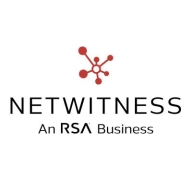

NetWitness NDR and Microsoft Defender for Endpoint are top contenders in the network detection and response and endpoint protection markets, respectively. Microsoft Defender for Endpoint appears to have the upper hand due to its comprehensive integration and easier deployment.
Features: NetWitness NDR offers deep packet inspection, advanced threat analytics, and network traffic analysis. Microsoft Defender for Endpoint provides integration across the Microsoft ecosystem, automated threat response, and cloud-based operations.
Room for Improvement: NetWitness NDR needs to enhance alerting capabilities, provide more intuitive configuration options, and improve usability. Microsoft Defender for Endpoint requires better reporting features, minor automation improvements, and enhanced reporting tools.
Ease of Deployment and Customer Service: NetWitness NDR has a complex deployment process requiring more technical expertise. Microsoft Defender for Endpoint offers smoother setup and better documentation. Both provide solid customer service, but Microsoft's support is more accessible and responsive.
Pricing and ROI: NetWitness NDR involves higher initial setup costs but delivers strong long-term ROI due to its threat detection capabilities. Microsoft Defender for Endpoint offers competitive pricing aligned with features and quicker ROI, making it suitable for budget-conscious organizations. Investment in Microsoft Defender for Endpoint is justified based on overall security and integration benefits.
The return on investment is primarily in time savings and better observability of what's happening.
I rate Microsoft support 10 out of 10.
Due to our size, we don't have access to direct technical support, but the knowledge base, Microsoft Learn, and the articles available are really good.
The level-one support seems disconnected from subject matter experts.
We managed to scale it out in a short amount of time, with two months of planning and three months of implementation on 10,000 computers.
Microsoft Defender for Endpoint is scalable enough to handle various devices across environments, whether they are laptops, Android devices, or operating in hybrid environments.
Defender's scalability is phenomenal, and it's going to be one of the keys to resolving issues for the SOC.
I rate Defender 10 out of 10 for stability.
I haven't seen any outages with Microsoft.
Defender for Endpoint is extremely stable.
Repeated interactions are necessary due to Level One's lack of tools and knowledge, hindering efficient problem-solving and negatively impacting our experience with Microsoft support.
We have multiple endpoints, and we want to look for signals across tenants.
Providing more detailed information on how Microsoft Defender for Endpoint detects vulnerabilities.
Given our extensive Microsoft licensing, transitioning to Defender for Endpoint did not affect licensing costs.
It costs $15 per VM for the P2 plan, which is seen as affordable for customers.
The pricing, setup, and licensing were very easy and simple.
Automated Investigation and Remediation features are vital for advanced threat protection and beneficial for device protection.
Defender for Endpoint's coverage across different platforms in our environment is pretty good. We have devices running Linux, Mac OS, Windows, iOS, and Android. It covers all of them.
I appreciate how easily Microsoft Defender for Endpoint integrates with our environment and the wide variety of logs it provides compared to other EDR tools.


Microsoft Defender for Endpoint is a comprehensive security solution that provides advanced threat protection for organizations. It offers real-time protection against various types of cyber threats, including malware, viruses, ransomware, and phishing attacks.
With its powerful machine-learning capabilities, it can detect and block sophisticated attacks before they can cause any harm. The solution also includes endpoint detection and response (EDR) capabilities, allowing organizations to quickly investigate and respond to security incidents. It provides detailed insights into the attack timeline, enabling security teams to understand the scope and impact of an incident.
Microsoft Defender for Endpoint also offers proactive threat hunting, allowing organizations to proactively search for and identify potential threats within their network. It integrates seamlessly with other Microsoft security solutions, such as Microsoft Defender XDR, to provide a unified and holistic security approach. With its centralized management console, organizations can easily deploy, configure, and monitor the security solution across their entire network.
Microsoft Defender for Endpoint is a robust and scalable security solution that helps organizations protect their endpoints and data from evolving cyber threats.
Using a centralized combination of network and endpoint analysis, behavioral analysis, data science techniques and threat intelligence, NetWitness NDR helps analysts detect and resolve known and unknown attacks while automating and orchestrating the incident response lifecycle. With these capabilities on one platform, security teams can collapse disparate tools and data into a powerful, blazingly fast user interface.
We monitor all Endpoint Protection Platform (EPP) reviews to prevent fraudulent reviews and keep review quality high. We do not post reviews by company employees or direct competitors. We validate each review for authenticity via cross-reference with LinkedIn, and personal follow-up with the reviewer when necessary.